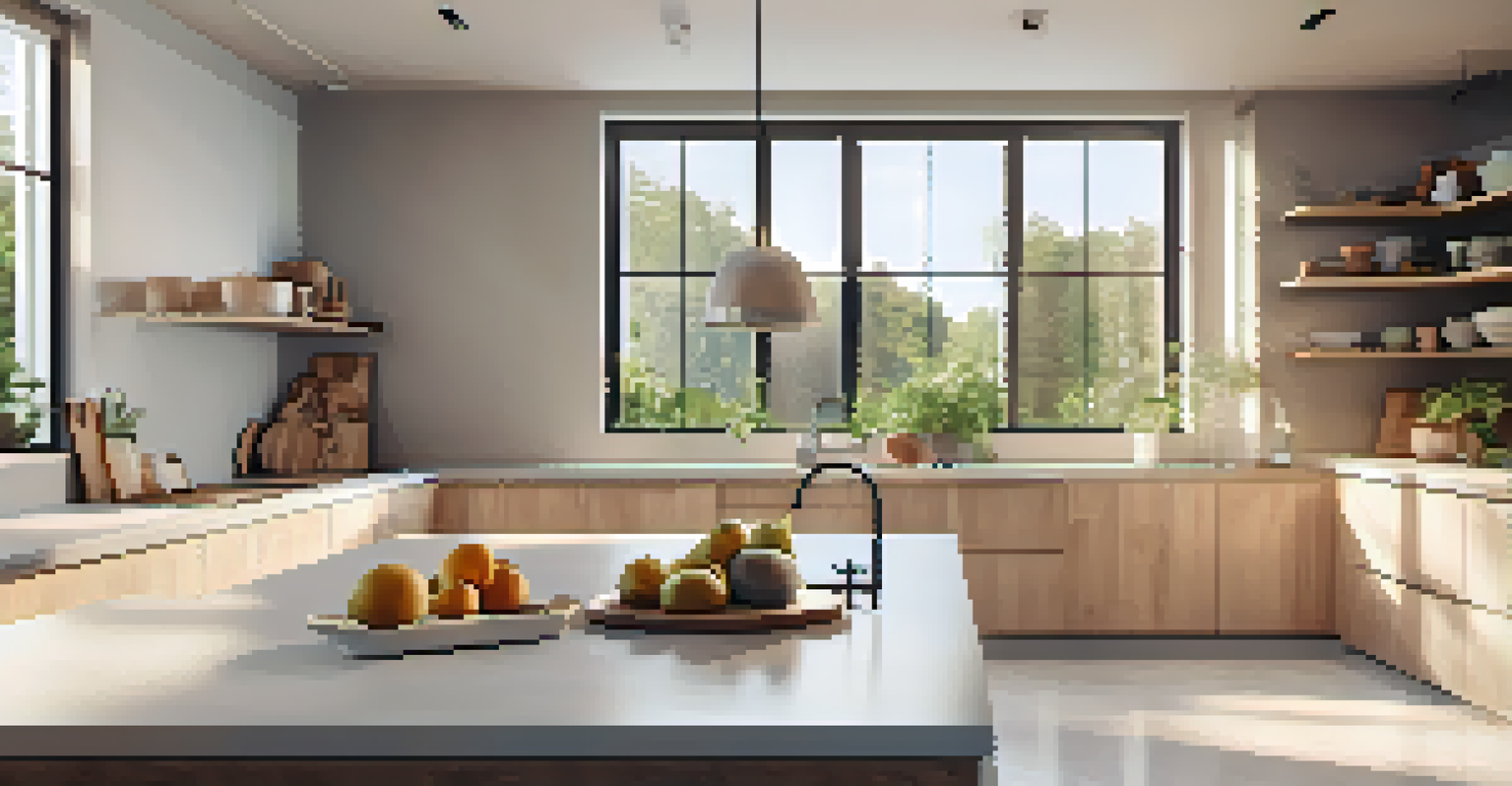How Scandinavian Design Reflects Cultural Minimalism

Understanding the Roots of Scandinavian Design
Scandinavian design is deeply rooted in the cultures of Denmark, Norway, and Sweden. It's not just about aesthetics; it reflects a way of life centered around simplicity and functionality. This design style emerged in the early 20th century, influenced by the region's harsh climate and a need for practical living spaces.
Simplicity is the ultimate sophistication.
The focus on natural materials and craftsmanship is a hallmark of Scandinavian design. Think of cozy wooden cabins and minimalist furniture that blend seamlessly with nature. This connection to the environment fosters a sense of tranquility and balance, essential elements in the Scandinavian lifestyle.
Moreover, the design philosophy encourages a clutter-free environment, which is a core aspect of cultural minimalism. By prioritizing quality over quantity, Scandinavian design promotes an appreciation for well-made objects that serve a purpose, creating serene and inviting spaces.
The Philosophy of 'Lagom' in Design
'Lagom' is a Swedish word that translates to 'just the right amount.' This philosophy permeates Scandinavian design, emphasizing balance and moderation. Instead of excess, the focus is on creating spaces that feel comfortable and harmonious, which aligns perfectly with cultural minimalism.

When designing a room, for instance, lagom encourages the use of only essential items that enhance the space. This might mean choosing a single, beautifully crafted chair instead of a set of mismatched furniture. Such choices reflect a mindful approach to living, where each piece serves a purpose and contributes to the overall aesthetic.
Simplicity Defines Scandinavian Design
Scandinavian design emphasizes simplicity and functionality, creating serene spaces that reflect a balanced lifestyle.
In practice, lagom can lead to a more sustainable lifestyle, as it promotes the idea of consuming thoughtfully. By avoiding excess, individuals can enjoy a more fulfilling life, surrounded by items that truly matter, reinforcing the minimalist mindset.
Natural Materials: The Heart of Scandinavian Design
One of the most striking features of Scandinavian design is its use of natural materials. Wood, stone, and textiles are often chosen for their beauty and sustainability. This connection to nature not only enhances the visual appeal but also reinforces the cultural values of simplicity and authenticity.
The best design is the simplest one that works.
For example, Scandinavian furniture often showcases the natural grain of wood, celebrating its imperfections. This approach creates a warm and inviting atmosphere, inviting people to connect with their surroundings. It’s a gentle reminder that beauty can be found in simplicity and authenticity.
Moreover, using natural materials contributes to a healthier living environment. Unlike synthetic alternatives, these materials tend to be more sustainable and environmentally friendly. This choice reflects a broader cultural commitment to preserving the natural world, which is a key tenet of Scandinavian living.
Functional Design: Beauty Meets Practicality
Functionality is at the core of Scandinavian design, where beauty meets practicality in every piece. This approach stems from the belief that design should serve a purpose, making everyday life easier and more enjoyable. For instance, a well-designed kitchen not only looks good but also enhances the cooking experience.
Take the classic Danish design of the 'Folkestolen' chair. While its form is strikingly simple, it’s engineered for comfort and support. This blend of form and function epitomizes the Scandinavian ethos, proving that design can be both aesthetically pleasing and incredibly useful.
Lagom: The Art of Balanced Living
'Lagom' embodies the philosophy of moderation, encouraging the use of essential items that enhance comfort and harmony.
In this way, functional design supports cultural minimalism by reducing the need for excess items. When each piece in a home serves multiple purposes, it encourages a more thoughtful approach to living, one that values quality over quantity and celebrates the essence of simplicity.
Color Palettes: Embracing Light and Neutral Tones
Scandinavian design often features a color palette dominated by light and neutral tones. Whites, grays, and soft pastels create a serene backdrop that reflects the region’s natural light. This choice not only brightens spaces but also contributes to a feeling of openness and calm.
The use of these colors is intentional, aiming to create a soothing environment that promotes relaxation. Imagine walking into a room painted in soft white with a few accents of muted color—it instantly feels inviting and peaceful. This approach aligns seamlessly with the minimalist philosophy of reducing visual clutter.
Additionally, these subtle color choices allow for versatility in decorating. Homeowners can easily switch out accessories or artwork without overwhelming the space. This adaptability is a key aspect of Scandinavian design, inviting a sense of fluidity and ease into everyday living.
Sustainability: A Core Value of Scandinavian Culture
Sustainability is more than a trend in Scandinavian design; it’s a core cultural value. The emphasis on environmentally friendly materials and practices reflects a deep respect for nature. This commitment to sustainability aligns perfectly with the principles of cultural minimalism, which advocate for thoughtful consumption.
For example, many Scandinavian designers prioritize recycled materials or sustainably sourced wood in their creations. This not only reduces waste but also encourages a circular economy, where products are designed to last and be repurposed. Such choices highlight a broader cultural mindset that values longevity and responsibility over fleeting trends.
Sustainability is Key to Design
A commitment to sustainability shapes Scandinavian design, prioritizing eco-friendly materials and practices that promote mindful consumption.
By integrating sustainability into design, Scandinavian culture inspires others to consider the environmental impact of their choices. It’s a gentle nudge towards a more mindful lifestyle, where every purchase contributes to a healthier planet, reinforcing the minimalist belief in consuming less but better.
The Influence of Scandinavian Design Worldwide
The appeal of Scandinavian design has transcended borders, influencing trends across the globe. Its emphasis on minimalism, functionality, and sustainability resonates with a growing audience seeking simplicity in their lives. This widespread appreciation has sparked the popularity of 'Scandi' aesthetics in homes, fashion, and even technology.
As people increasingly value experiences over possessions, Scandinavian design offers a refreshing alternative. The principles of clean lines and functional forms encourage a lifestyle that prioritizes quality interactions and meaningful connections. It’s about creating spaces that foster joy and well-being, rather than being filled with clutter.

Moreover, the global influence of Scandinavian design has led to a rise in new interpretations that blend local cultures with these minimalist principles. This cross-cultural exchange enriches design landscapes, proving that the essence of Scandinavian design can adapt while still honoring its roots in cultural minimalism.